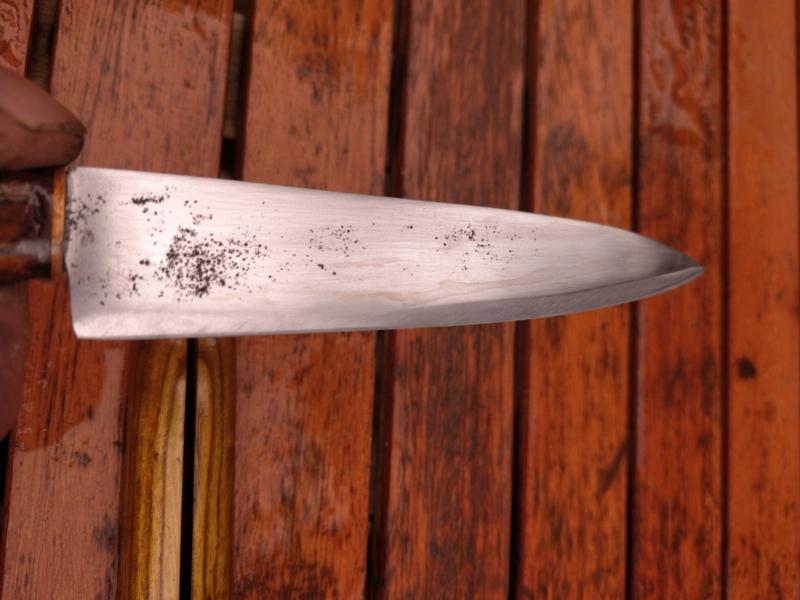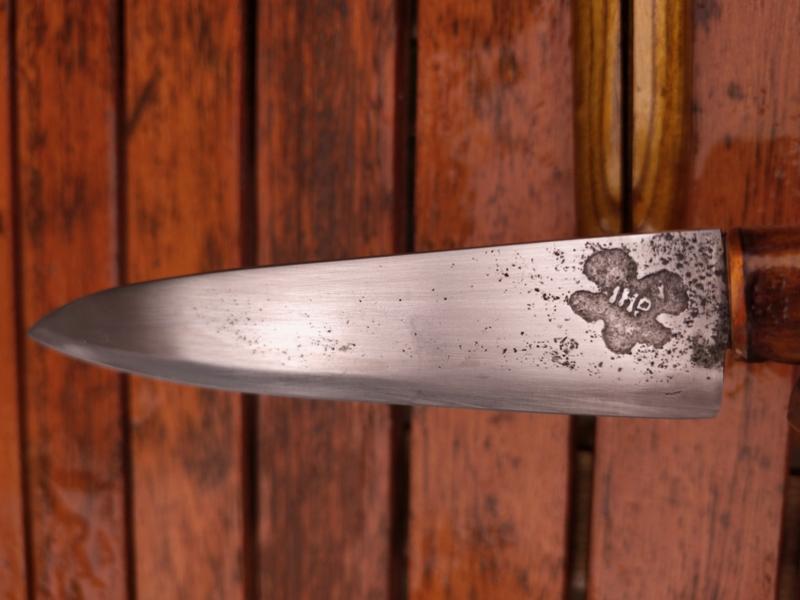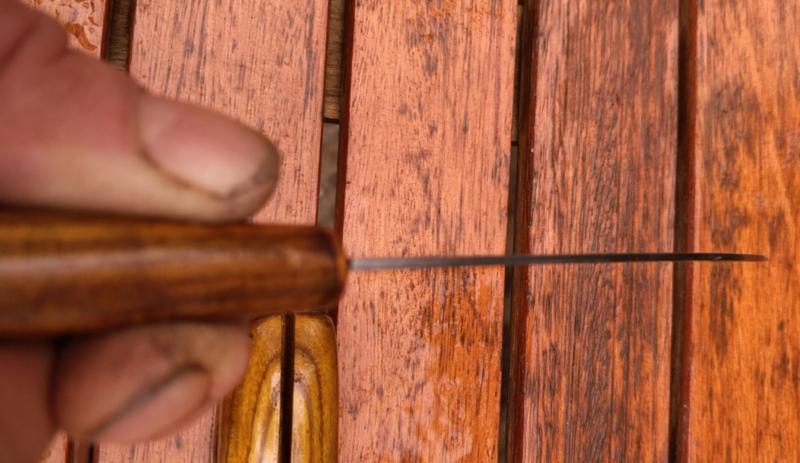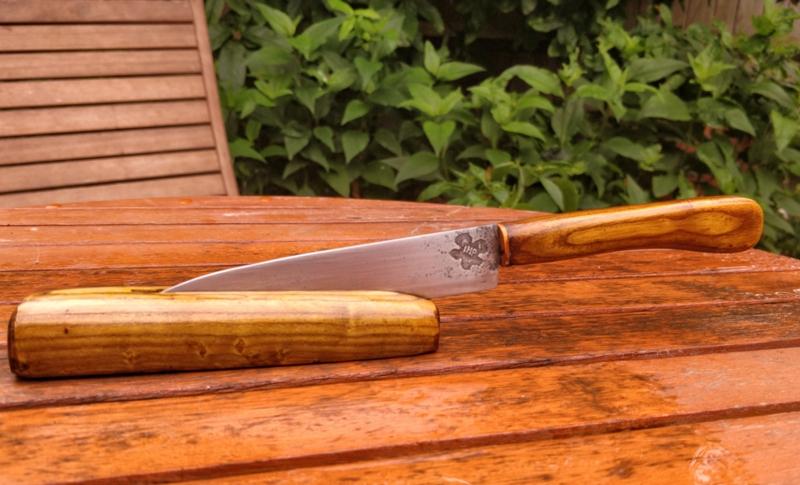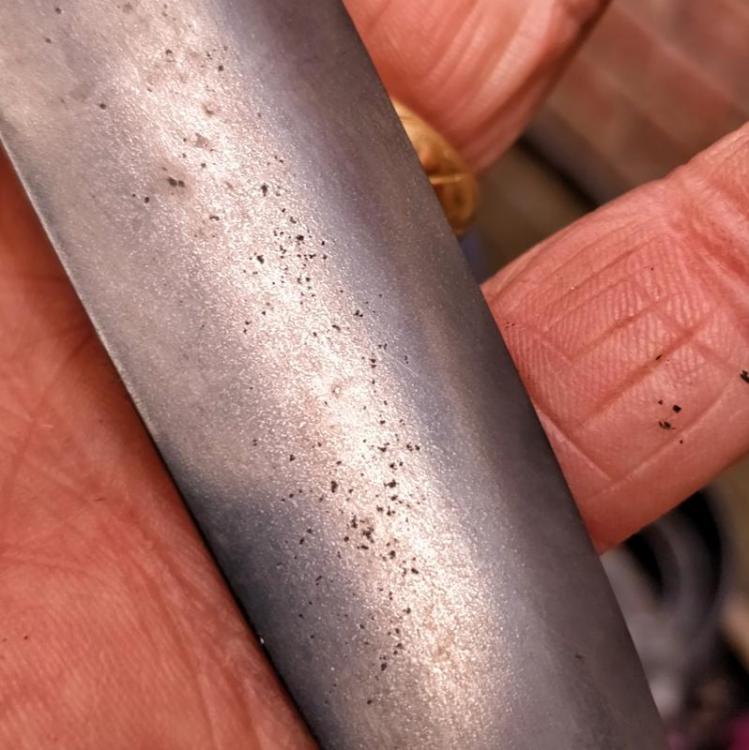
Scalebar
Members-
Posts
57 -
Joined
-
Last visited
Profile Information
-
Location
Birmingham uk
-
Interests
Lapidary, microscopy, silverwork.
Recent Profile Visitors
-
What's the advantage of high carbon steel if you don't harden?
Scalebar replied to Scalebar's topic in Metallurgy
I really struggle to understand how a mecahnical mechanism produces movements on a near molecular scale, I've seen the schematics but brain says "what's the catch?". I've only done em on steel a couple of times - as the operator, I'm a biologist, I'd love to go back now I'm starting to grasp the very basics of steel metallurgy. -
What's the advantage of high carbon steel if you don't harden?
Scalebar replied to Scalebar's topic in Metallurgy
They're not stainless - many warnings about oiling before storing, even the disposables aren't - trace elements and stuff. As for the diamonds, well my 2.5mm blade was 6k sterling and costs 1k to sharpen, it's one of the few bits of lab kit that's 'personal' - as in you use the communal blade unless I tell you in writing you can use mine - we get tetchy. Cuts to 70nm though, probably too thin for tomatoes. -
What's the advantage of high carbon steel if you don't harden?
Scalebar replied to Scalebar's topic in Metallurgy
Thanks all, good to know. We don't use them anymore (the disposables are even sharper and cheaper ) I always assumed they were very hardened because we used diamond paste on a lap to sharpen and they go through most body parts in very thin sections - I've done bone. I remember my training - if you drop one step back, do not try to catch, you could loose a digit. I've got a few to forge with at some point. I also use diamond blades - 100% carbon makes a great edge but the slightest inattention when your working and plink.... -
What's the advantage of high carbon steel if you don't harden?
Scalebar posted a topic in Metallurgy
Short version - I dropped a large histology microtome blade - these are about 500g wedges of steel, alarmingly sharp. I expected it to chip but the cutting edge dented. I know they're plain high carbon steel but what advantages does that give if it's not hardened? -
Leaving gift for my boss. Aside from heating it up to flatten out this was pure stock removal, starting on a cheap belt sander and bevelling on a hand sanding jig. I based the shape on one of my bought kitchen knifes - I'm pleased enough with this one that I'll stick with the design for a few more and play around with the handle design. Steel from an old coal shovel - it hardened well. I didn't intend to go that thin but I kept trying to grind out the marks and got carried away before realising they were inclusions. The bevel on the right hand side isn't quite even - a slight dip in the metal about half way along, it got to the point where any more trying to fix it would have made it worse. Quenched it in warm veg oil, tempered with a torch. The sumac wood is very porous, I had to give it a few good soaks of shellac before it would sand well. I'm wondering whether to go over the steel again with a little wire wool.
-
Do inclusions tell me anything about the metal?
Scalebar replied to Scalebar's topic in Knife Making
This thing's all steel apart from the t bar - unless it had very long wooden shaft. The socket's welded onto a hefty shaft that's then riveted into another section. I figure I need to cut that into sections, slit it and flatten it. It all seems to spark well but I've not tried hardening it yet. -
Do inclusions tell me anything about the metal?
Scalebar replied to Scalebar's topic in Knife Making
It hardens well - snapped as I tightened the vice on it, nice fine grained grey-white fracture line -
Do inclusions tell me anything about the metal?
Scalebar replied to Scalebar's topic in Knife Making
Thanks, I'm of sprung secateurs next - tin snip style spring , I'm figuring this would be bad choice for the spring? -
Do inclusions tell me anything about the metal?
Scalebar replied to Scalebar's topic in Knife Making
True but it won't stop me using mystery steel, probably wouldn't use this for aerospace applications though. With lapidary I got used to getting something almost complete then, plink.... I wonder what the faliure rate used to be in the days of bloomery metal -
Slowly converting an old coal shovel into new tools. This knife's stock removal, I've taken the metal down from 3mm to 1mm so I'm pretty certain these marks are inclusions. This is after heat treating and 800 grit clean up, Can I infer anything about the material from them? Other than it adds a little character...
-
Metal tempering without an oven
Scalebar replied to MisterJohn's topic in Heat Treating Knives, Blades etc
Thanks, and yeah I've looked at some of the bewilderingly complex - and outright dangerous treating regimes some people use. I think I'll keep it simple ( although... I do have access to dry ice and liquid nitrogen) -
Metal tempering without an oven
Scalebar replied to MisterJohn's topic in Heat Treating Knives, Blades etc
I'm thinking of trying torch tempering because for one small piece every week or so running the oven for hours doesn't make a lot of sense. Why does tempering in an oven take much longer? -
clay for forging practice
Scalebar replied to MattBower's topic in Blacksmithing, General Discussion
Copper's nice to forge cold which takes the added complexity of heat out of the hammering side of the process but keeps the fun of heating in the annealing and quenching. I spent a lot of last year melting ebay scrap silver into small pucks and forging out -
They're very handy tools when your allotment mostly grows horsetail. One edge of my more western style trowel is also sharpened up for when I need a bit of heft on the brambles. I've spark tested the handle at a few spots - looks like the full length is similar stuff
- 6 replies
-
- etch
- garden tool
-
(and 2 more)
Tagged with:
-
If it was for someone else I'd smooth and polish but I like my stuff to look old and battered from the start. How well the edge will hold remains to be seen but I'm thinking it's suitable material for a kitchen knife or two.
- 6 replies
-
- etch
- garden tool
-
(and 2 more)
Tagged with:


